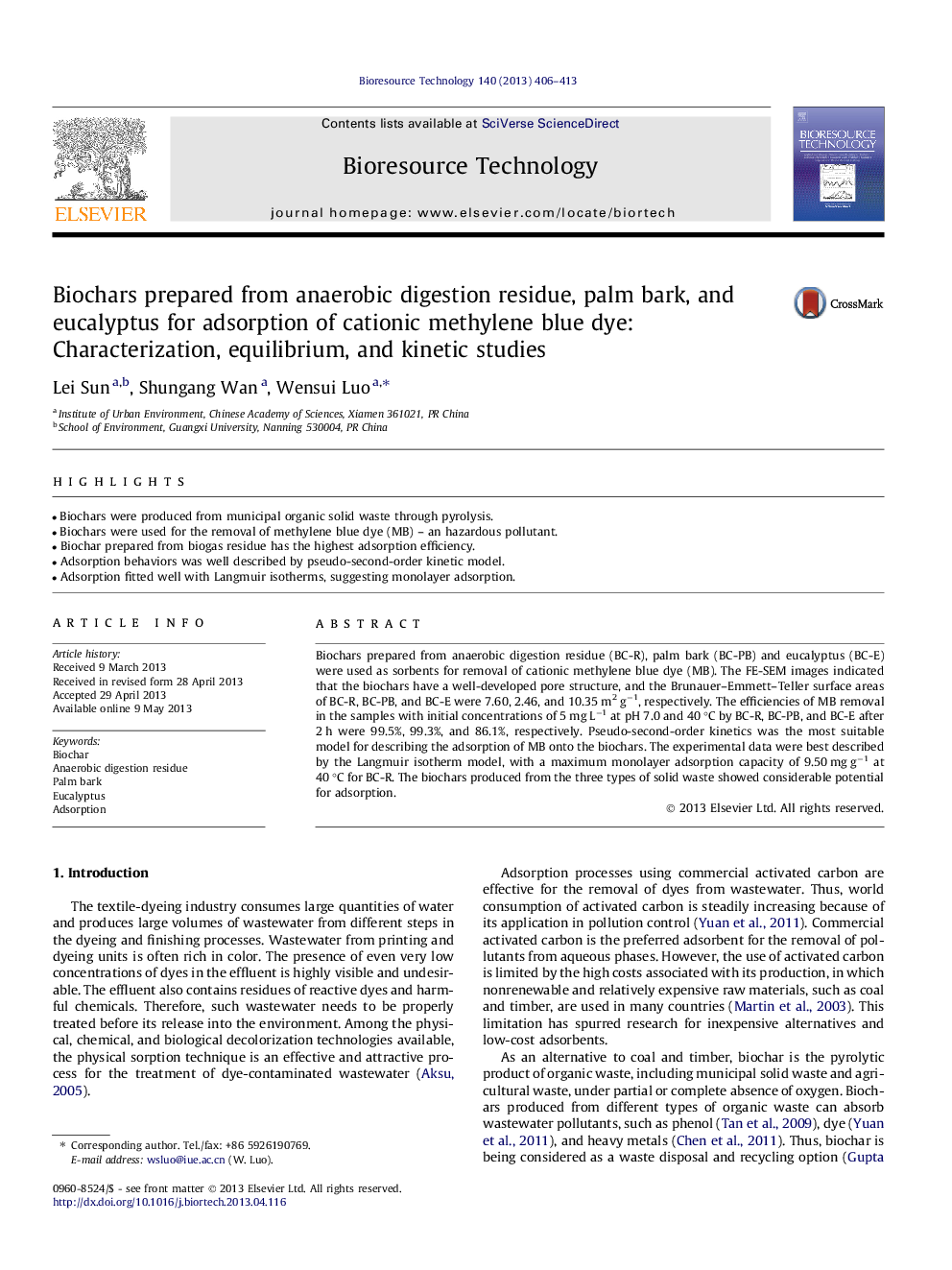| Article ID | Journal | Published Year | Pages | File Type |
|---|---|---|---|---|
| 7082293 | Bioresource Technology | 2013 | 8 Pages |
Abstract
Biochars prepared from anaerobic digestion residue (BC-R), palm bark (BC-PB) and eucalyptus (BC-E) were used as sorbents for removal of cationic methylene blue dye (MB). The FE-SEM images indicated that the biochars have a well-developed pore structure, and the Brunauer-Emmett-Teller surface areas of BC-R, BC-PB, and BC-E were 7.60, 2.46, and 10.35 m2 gâ1, respectively. The efficiencies of MB removal in the samples with initial concentrations of 5 mg Lâ1 at pH 7.0 and 40 °C by BC-R, BC-PB, and BC-E after 2 h were 99.5%, 99.3%, and 86.1%, respectively. Pseudo-second-order kinetics was the most suitable model for describing the adsorption of MB onto the biochars. The experimental data were best described by the Langmuir isotherm model, with a maximum monolayer adsorption capacity of 9.50 mg gâ1 at 40 °C for BC-R. The biochars produced from the three types of solid waste showed considerable potential for adsorption.
Keywords
Related Topics
Physical Sciences and Engineering
Chemical Engineering
Process Chemistry and Technology
Authors
Lei Sun, Shungang Wan, Wensui Luo,
